| << Chapter < Page | Chapter >> Page > |
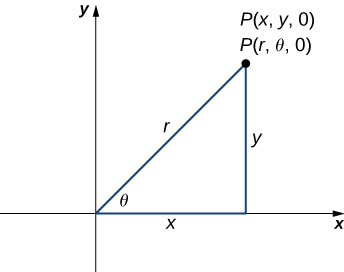
Let’s consider the differences between rectangular and cylindrical coordinates by looking at the surfaces generated when each of the coordinates is held constant. If is a constant, then in rectangular coordinates, surfaces of the form or are all planes. Planes of these forms are parallel to the yz -plane, the xz -plane, and the xy -plane, respectively. When we convert to cylindrical coordinates, the z -coordinate does not change. Therefore, in cylindrical coordinates, surfaces of the form are planes parallel to the xy -plane. Now, let’s think about surfaces of the form The points on these surfaces are at a fixed distance from the z -axis. In other words, these surfaces are vertical circular cylinders. Last, what about The points on a surface of the form are at a fixed angle from the x -axis, which gives us a half-plane that starts at the z -axis ( [link] and [link] ).
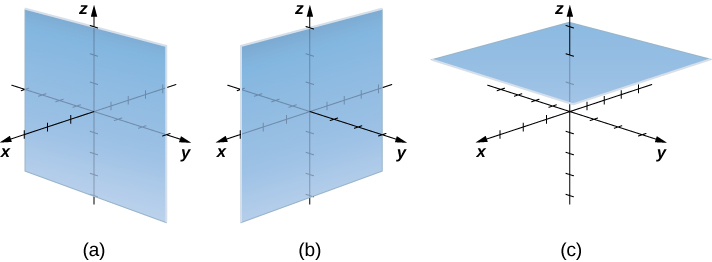
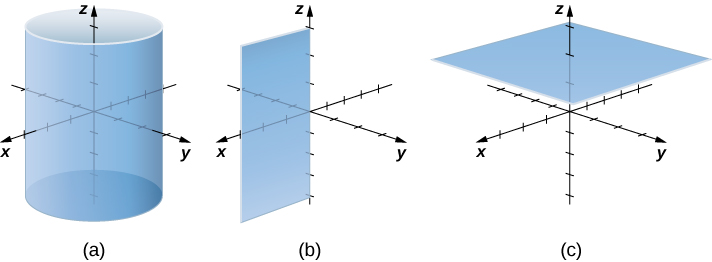
Plot the point with cylindrical coordinates and express its location in rectangular coordinates.
Conversion from cylindrical to rectangular coordinates requires a simple application of the equations listed in [link] :
The point with cylindrical coordinates has rectangular coordinates (see the following figure).
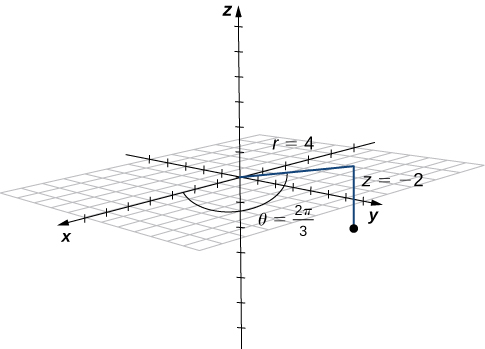
Point has cylindrical coordinates . Plot and describe its location in space using rectangular, or Cartesian, coordinates.
The rectangular coordinates of the point are
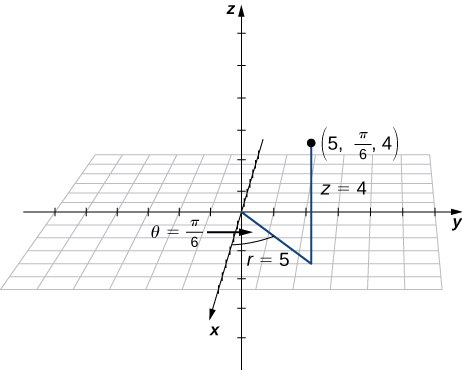
If this process seems familiar, it is with good reason. This is exactly the same process that we followed in Introduction to Parametric Equations and Polar Coordinates to convert from polar coordinates to two-dimensional rectangular coordinates.
Convert the rectangular coordinates to cylindrical coordinates.
Use the second set of equations from [link] to translate from rectangular to cylindrical coordinates:
We choose the positive square root, so Now, we apply the formula to find In this case, is negative and is positive, which means we must select the value of between and
In this case, the z -coordinates are the same in both rectangular and cylindrical coordinates:
The point with rectangular coordinates has cylindrical coordinates approximately equal to

Notification Switch
Would you like to follow the 'Calculus volume 3' conversation and receive update notifications?